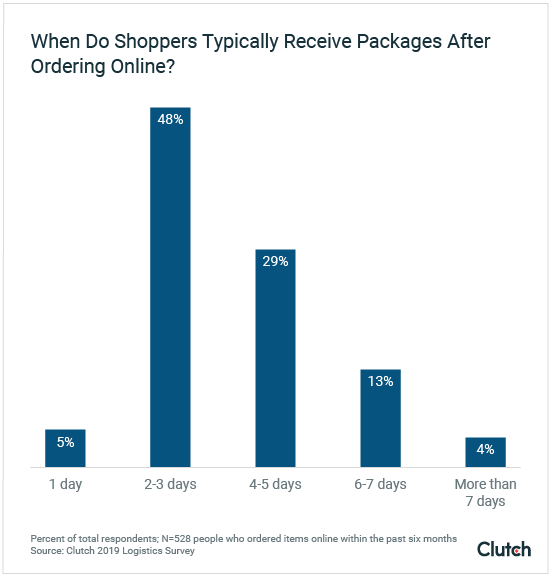When you are competing with the likes of Amazon, it is hard for a small business to deliver on customer expectations. This is especially the case with shipping.
A new survey and report from Clutch looks to find out, “How Consumer Hunger for Two-Day Delivery Impacts Small Businesses.” As more small businesses introduce online commerce with their brick and mortar operations, shipping plays an important role.
Riley Panko, who wrote the report, explains the challenges small businesses face as more consumers order online.
Panko says, “Deliveries must move fast in the age of online shopping. Customers may not understand what exactly goes into getting a package to their doorstep in 2 to 3 days, though – and that their expectations for faster shipping have consequences, including pricing out smaller, local retailers that cannot offer fast shipping on the scale of major online retailers.”
According to Panko, the goal of the report is to help:
- Consumers understand the real-world impact of their expectations for faster shipping
- Small businesses learn strategies for adapting to faster delivery timelines
In order to find out how Clutch surveyed 528 online shoppers. The participants in the survey revealed how quickly they typically get their package. They also shared their opinions on shipping times.
Data of Online Shoppers
According to this survey, 48% of online shoppers say they get their packages within 2-3 days. Another 42% say it takes 4-7 days to get their online orders, but overall consumers now expect faster shipping.
Almost half or 45% will not order from a company again if the delivery is late. Panko gives small businesses great advice on this very data point. She goes on to say don’t promise quick delivery timelines if you can’t execute.
Impact of Faster Delivery Demands
No matter what percentage of your business is made up of online commerce, you have to prioritize faster delivery. Because if your customers can count on you and you meet their demands, you will retain them longer.
How can you do this?
You start by adjusting your shipping strategy so you can compete with other small businesses or even large eCommerce companies.
These are the recommendations from the report:
- Reconsider the popularity of their current product offerings and consider streamlining products that are less popular but more difficult to ship
- Understand the benefits of shipping from certain geographic locations
- Communicate constantly with customers about the progress of deliveries
- Be realistic about their shipping capabilities and not over-promise on delivery timelines
- Seek outside help from third-party logistics providers if they can’t keep up with consumer expectations
Conclusion
Last but not least, talk to your customers. An advantage your small business has over a multi-national is you can deliver a more personalized service. With this relationship, your customers probably won’t mind waiting another day or two to get their package.
The key is not to overpromise and deliver the packages late. If the package is going to arrive late, call the customer and explain why. Again, personalizing your connection with the customer is important.
Even if 45% of customers will not order again if shipping is late, the fact that you called to explain the reason might give you another chance.
You can read the full report here.
Image: Depositphotos.com


